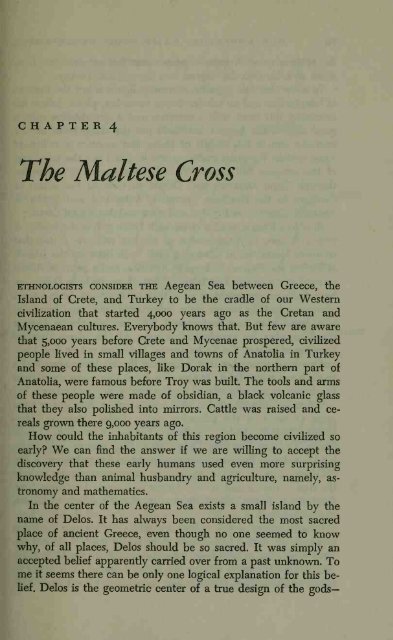Create successful ePaper yourself
Turn your PDF publications into a flip-book with our unique Google optimized e-Paper software.
CHAPTER 4<br />
The Maltese Cross<br />
ETHNOLOGISTS CONSIDER THE Aegean Sea between Greece, the<br />
Island of Crete, and Turkey to be the cradle of our Western<br />
civilization that started 4,000 years ago as the Cretan and<br />
Mycenaean cultures. Everybody knows that. But few are aware<br />
that 5,000 years before Crete and Mycenae prospered, civilized<br />
people lived in small villages and towns of Anatolia in Turkey<br />
and some of these places, like Dorak in the northern part of<br />
Anatolia, were famous before Troy was built. The tools and arms<br />
of these people were made of obsidian, a black volcanic glass<br />
that they also polished into mirrors. Cattle was raised and cereals<br />
grown there 9,000 years ago.<br />
How could the inhabitants of this region become civilized so<br />
early? We can find the answer if we are willing to accept the<br />
discovery that these early humans used even more surprising<br />
knowledge than animal husbandry and agriculture, namely, astronomy<br />
and mathematics.<br />
In the center of the Aegean Sea exists a small island by the<br />
name of Delos. It has always been considered the most sacred<br />
place of ancient Greece, even though no one seemed to know<br />
why, of all places, Delos should be so sacred. It was simply an<br />
accepted belief apparently carried over from a past unknown. To<br />
me it seems there can be only one logical explanation for this belief.<br />
Delos is the geometric center of a true design of the gods—

















